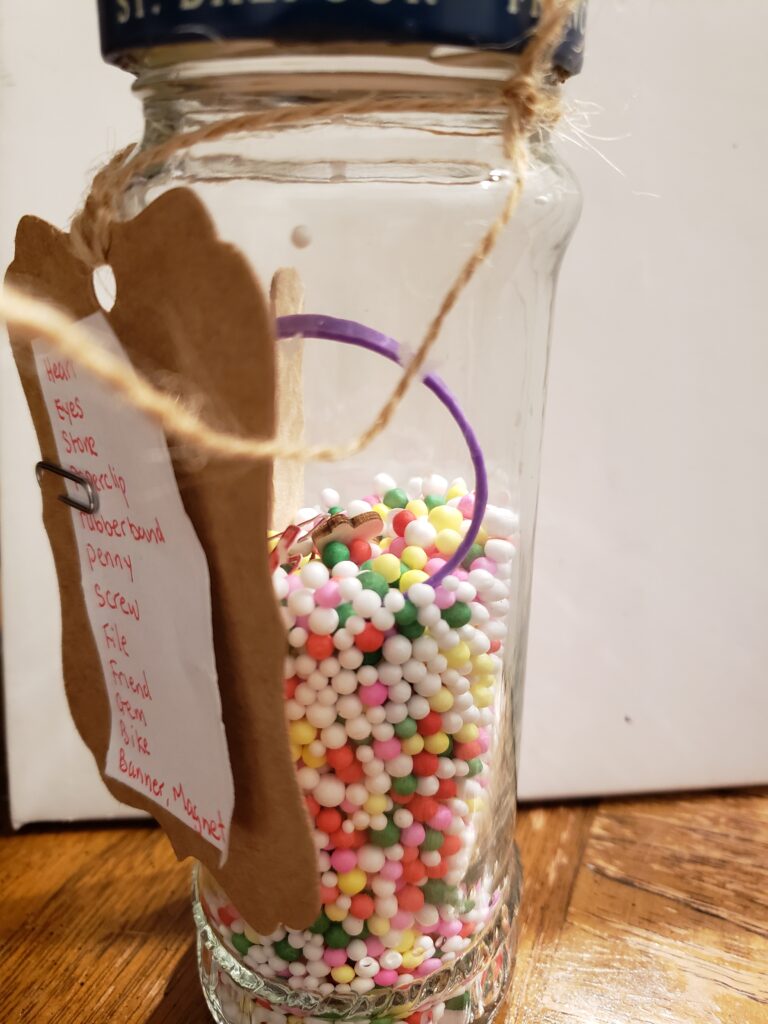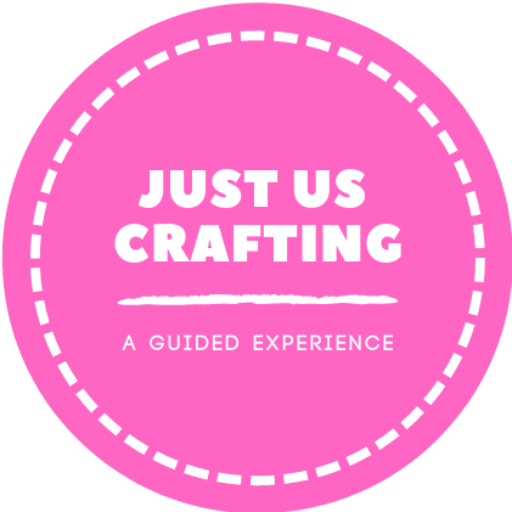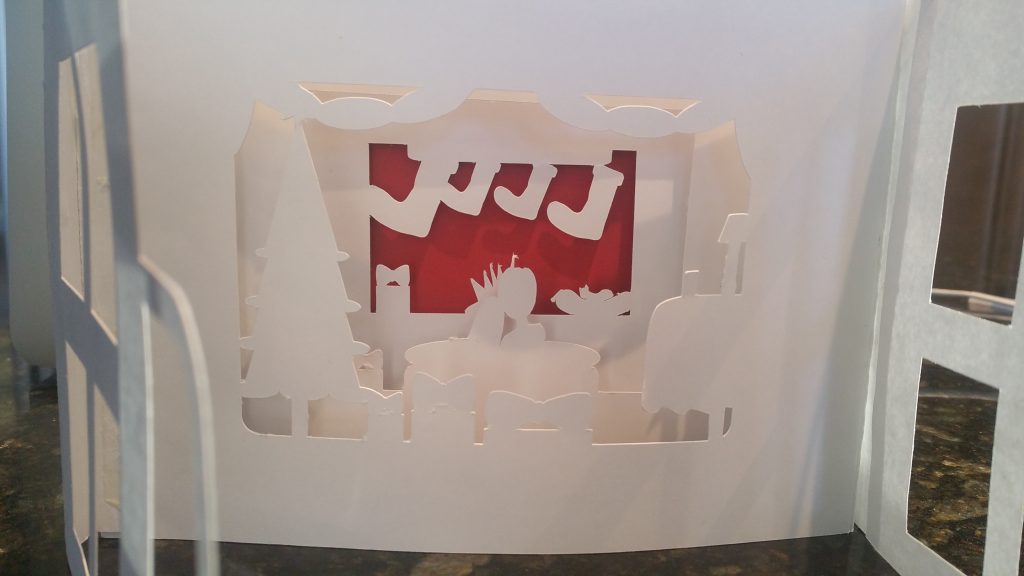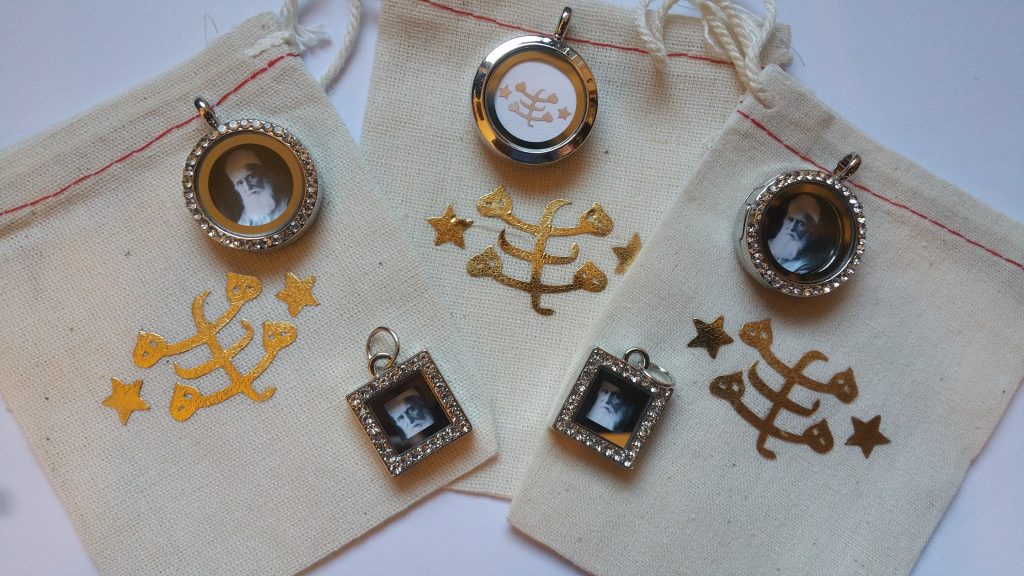
Searching For Truth
SET #3
GRADE 2 LESSON 9
WELCOME
From the earliest days of our lives, we seek to make sense of the world around us, and our thirst for knowledge is great. Our natural desire is to look for answers and search for truth.
Many factors influence us as we progress in our development—whether it is physical, intellectual, or spiritual—but motivation is fundamental to our learning at every age. As we have discussed in many courses, understanding is itself the greatest of all motivators. When we achieve understanding, pursuing learning becomes a source of continued joy.
Searching for God
Abdu’l-Baha explains that, when we look at the world, we see the signs of God’s perfections everywhere. As we think about His words and try to understand their meaning, we see God’s tokens and signs around us. The sun shines and gives light, warmth, and life to the world, reminding us of the love of God, without which we would perish. The rain falls on the earth just as the bounties of God are continuously showered upon our souls. A mountain rises towards the heavens calling to mind His majesty and grandeur.
When we start our search, we must purify our hearts,. We must open our hearts to the truth. We must not let “veils” get in the way of our search. Does anyone know what type of Veils could prevent us from finding God?
Here are a few examples:
- We think we know everything
- We think we are smarter than everyone else
- We are not detached
- We…
Today we will explore: Searching for the truth
Some of the things we want to keep in mind when looking at this topic are:
How do you recognize Truth? Where do you start on your journey looking for truth? When do we search for truth? Why is it important to seek and find the truth
PRAYER
This is the last lesson from set 3 to memorize the prayer.
O my Lord! Make Thy beauty to be my food, and Thy presence my drink, and Thy pleasure my hope, and praise of Thee my action, and remembrance of Thee my companion, and the power of Thy sovereignty my succorer, and Thy habitation my home, and my dwelling-place the seat Thou hast sanctified from the limitations
Bahá’u’lláh
imposed upon them who are shut out as by a veil from Thee. Thou art, verily, the Almighty, the All-Glorious, the Most Powerful.
QUOTE
To acquire knowledge, we spend our lives striving to learn about the world around us and searching for the truth. Our love for learning grows as we study the sciences and the arts, draw insight from the teachings of God, put into action the knowledge we gain, and feel the joys of true understanding. We ask questions of our parents, elders, and teachers and reflect on what we discover. Searching for truth requires us to be attentive—to listen, observe, to think deeply. We strive, and we persevere. Often we make mistakes, but our understanding increases as we think about what we did and continue to put forth effort.
‘Abdu’l-Bahá tells us that truth is one, no matter where we may find it. For example, light is good, from whatever lamp it may shine. A rose is beautiful, in whatever garden it may grow. ‘Abdu’l-Bahá explains that, in searching for truth, we must let go of prejudice and superstition. We must keep our minds open at all times, looking for answers. He always encouraged questions from the many people who came to visit Him, and He responded to them with great courtesy, love, patience, and wisdom. Through His answers, people were able to further their knowledge and understanding of physical and spiritual reality and to see how they could contribute to the betterment of society. ‘Abdu’l-Bahá tells us that we can continue to learn throughout our lives. To help us remember to make every effort to search for truth and acquire knowledge, let us memorize the following quotation:
ADD QUOTE He must search after the truth to the utmost of his ability and exertion, that God may guide him in the paths of His favor and the ways of His mercy
Bahá’u’lláh
MEANING OF WORDS
We need to do what with the utmost of our ability and exertion.
Search after truth.
When we do that, what does God do?
He guides us in the paths of His favour and the ways of His mercy.
What is favour?
What is mercy?
What a blessing! We take steps towards him and He runs to us!
- Utmost
- Ability
- Exertion
Matt pushed with all his strength but could not move the cart up the road. Matt made his utmost effort to move the cart.
Stella tries her hardest to assist her little sister with her homework, no matter how much effort it takes. Stella tries her utmost to help her sister.
Carmen is learning to do additions and subtractions at school. By carrying out exercises every day, Carmen is developing the ability to add and subtract.
Naim’s job is to design buildings. As part of his job, he must draw the buildings he wishes to create. The ability to draw is important to Naim’s work.
Alice wanted to help carry the shopping bags to their home, even though it was very heavy. So, with great exertion, Alice lifted it and, carried it home.
The boys needed to meet their friends up the river, so they began to swim upstream. Swimming upstream, against the flow of the river, requires great exertion.
SONG
STORY
There are many stories of those who have sought the truth and acquired knowledge in order to better understand and grow closer to God. This is the story of a brave and knowledgeable woman, to whom Bahá’u’lláh gave the name Ṭáhirih, meaning “The Pure One”.
Ṭáhirih was born in Persia in the early 1800s, some two hundred years ago. From a young age, she had a thirst for knowledge; she loved to study from books and was eager to learn as much as she could. She would listen to her parents and family as they discussed spiritual and religious matters, and her father, who was a famous clergyman in the country, would give her lessons, which she followed with great ease. At that time, it was rare for women to be educated, but Ṭáhirih’s desire for knowledge was so keen that her father eventually found a teacher for her who guided her studies of the arts and the sciences. As Ṭáhirih progressed, her father even arranged for her to listen to his own
religious classes, though she had to do so from behind a curtain, as customs would not permit her to mix with the male students. Such was the degree of her accomplishments that her father was heard to remark that, had she been a boy, she would have succeeded him. Of course, for everything she had learned, Ṭáhirih still had many questions and was eager to learn more. One day, while visiting a relative, she noticed some books in his library which interested her. They were written by Shaykh Aḥmad and Siyyid Káẓim, two
notable scholars of religion. Ṭáhirih’s relative was hesitant to lend her the books, which he feared were not in line with her father’s views. But Ṭáhirih was persistent and eventually persuaded her relative to give her the books to take home. She read the writings of Shaykh Aḥmad and Siyyid Káẓim with great care and attention and found in them many gems of wisdom. She tried to share their writings with her father, but he refused to listen to their words. Still, Ṭáhirih’s heart was attracted to the beauty of their ideas, and she began to correspond with Siyyid Káẓim, asking him the many questions that her studies had raised in her mind. She sensed that she was being led to a new spiritual truth and determined that she must go to the city of Karbilá to study with Siyyid Káẓim. As a woman, she would not be permitted to travel alone, so she convinced her father to allow her to travel to Karbilá with her sister, and they set out on the long journey. When they eventually arrived, Ṭáhirih discovered that Siyyid Káẓim had passed away just a few days earlier. Imagine her disappointment! She had traveled so far and had hoped to learn so much from him. Siyyid Káẓim’s family could see how disappointed she was and how sincere was her desire to learn. So they invited her to stay for a while and made available to her the writings of Siyyid Káẓim that had not been published. What joy she must have felt to be able to study his words of wisdom and gain new insights. She was even able to share her understanding of profound matters with some of Siyyid Káẓim’s students, sitting behind a curtain, just as she had done in her father’s classes. Ṭáhirih did not return home for several years. In the city of Karbilá, her search for truth would, by the grace of God, eventually yield its most precious fruit. For in that city, she would be blessed to recognize the truth of the Divine message which had been brought to the people of Persia by the person of the Báb. How she was guided to recognize the Báb is another story that we will hear in a later class. But you should know that, after declaring her belief in the Báb, Ṭáhirih went on to become one of the most outstanding heroines of the Bahá’í Faith and a champion of the cause for women. Her courage and strength were indomitable, and her breadth of learning was vast. She dedicated the rest of her life to gaining knowledge, composing poems and articles that reflected her deep understanding of the teachings of God, and leading many a searching soul to the truth they sought.
Draw any part of the story
DRAMA
The activities that follow will help the children continue developing the skills and abilities of creative drama.
Ask your students to stand in their imaginary squares. As you did in the previous lesson, have the children stand about 5 feet apart and imagine that they are in their own squares. Ask them to walk along the border of his/her imaginary square.
Ask children to raise up their arms and stretch from the tips of their toes to the tips of their fingers, reaching towards the sky. Now you are going to relax and let your arms and head hang freely. Repeat this several times.
For this next exercise, the children will remain in their imaginary squares. Ask them to create a shape with their bodies, using their heads, arms, and legs. This is shape number 1. Tell them to hold that shape for a few seconds.
Next, have them move into a second shape. This is shape number 2. Again have them hold the shape for a few seconds. Now count- 1, 2, 1, 2, 1, 2 as the children move from shape to shape. Call freeze when children are in shape number 2. Now ask the students to find a completely new shape. This is shape number 3. Have them hold it for a few seconds, and then go back to shape number 1. Now count 1, 2, 3, 2, 1, 3, 1, 2, 1, 3- as the children move from shape to shape. Call freeze when children are in the shape number 3.
Finally, have the children create a fourth shape and ask them to hold it for a few seconds. Then ask them to go back to shape number 1 and count, 1, 2, 3, 4 (mix it up) having children move from shape to shape. Try to establish as much of a rhythm as you can.
For the next activity, you can have the children act out parts of a story, which will help to consolidate in their minds, if only in a rudimentary way, what it means to search for the truth. Begin by asking the children to demonstrate each of the following actions, without stepping outside of their imaginary squares:
- walking
- running
- climbing
- jumping
- stomping
- pushing
- looking/gazing
Next explain to the children that you will tell them a story about a group of children, much like themselves, living in the village of Karu Karu. They will need to listen attentively while you speak. Whenever you refer to one of the actions mentioned earlier- for example, walking- they should follow suit, pretending to be the child in the story. (To assist them, you may wish to carry out the relevant action yourself in each specific instance)
The village of Karu Karu was next to a beautiful river. All of the people in the village used the water from the river to cook, clean, and grow their crops/food. On very hot days the children from the local school would WALK down to the river to swim in the cool water. One hot summer’s day after their school lessons were over, the children RAN down to the river. But when they arrived, to their surprise, they saw that there was just a trickle of water coming down the mountain, where once an abundance of water had flowed. They knew that if the water was drying up downriver, there must be problems upriver. With such little water available, the whole village would be in trouble. How would the farmers grow their crops? How would everyone cook their food? If only they knew what the problem was they could try to find a solution. They wondered whether perhaps the source of the water had dried up. In consultation with their teacher and their parents, they decided that the next day they would set out on a journey with their teacher to WALK to the top of the mountain to try and discover the problem and see what they could do.
The next morning at dawn the children set out with their teacher and WALKED until they reached the foot of the mountain. Looking up at the mountain some commented, “The top of the mountain is very far; how can we ever make it all the way up?” The teacher explained, “We will have to go slowly and be patient with each other and with ourselves”. Taking each other’s hands, they hesitantly began to WALK up the mountain. They CLIMBED and CLIMBED and the higher they went, the harder it became. But they learned to draw on their strength. Sometimes their feet would slip but they would help one another to keep going. They WALKED and WALKED and it seemed like the journey would never end. When they reached a muddy path, some STOMPED through it while others RAN across as quickly and carefully as they could. After WALKING for some time, they suddenly came upon a tree fallen on the ground. At first, each of the children individually tried different things to move the tree, but nothing happened. Then, putting all their efforts together, and with all their strength, they PUSHED until the tree rolled out of the way.
The further up they went, the steeper the mountain became. They had to use their hands and legs and they CLIMBED up the steep path leading to the very top. When one of them wanted to give up, the others would remind him or her that they had to keep going to help the village. Finally, they reached the top of the mountain and in their excitement, they RAN to the source of the river. But the water was flowing normally and there seemed to be nothing wrong. Realizing the problem was not at the source, the children WALKED to another part of the mountain where they could LOOK down at the river, and as they stared into the distance, they suddenly saw that there was a blockage in the river, which was causing it to flow away from the village. At last, after their long journey, they found the problem! The children started JUMPING for joy, for they finally knew what to do to help bring water back to the village.
CRAFTS
Make An I Spy Jar
Searching Is Making Sure We Are Observant

Items Needed:
Small items (e.g., rubber band, coin, button, paperclip, tiny toys)
Filler (e.g., rice, sand, confetti, beads)
Large bottle
Optional: checklist, glue
Instructions:
- Place small items in the bottle.
- Fill the bottle with your chosen filler.
- Seal the bottle.
- (Optional) Attach the checklist to the bottle
Create your Own Board Game
The Board Game can be about searching for the truth. You can use the quote, the story of Ṭáhirih, or any other idea.
Not sure what a board game could look like?
Be A Detective
Create your Badge. Send Your Secret Messages. Break The Code. Be Observant. Are you a Truth Detective in good standing?
Make your badge to prove it!
What you will need:
- Print the template badge on cardstock
- Hole punch
- String
- Pen to fill in the information
- Decorate the outside with markers etc.
REVIEW QUOTES
O Son of Being! Thou art My lamp and My light is in thee. Get thou from it thy radiance and seek none other than Me.
Baha’u’llah
Trustworthiness is the greatest portal leading unto the tranquillity and security of the people.
Baha’u’llah, Tablets of Baha’u’llah




